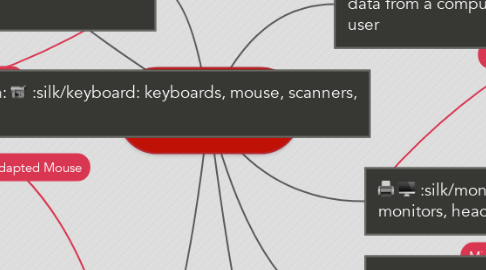Input & Output Devices
by Aquila J Grimes

1. keyboards, mouse, scanners, digital cameras
2. Input Devices are devices that are used to put information into the computer
3. Most students with multiple disabilities have limited verbal communication skills. Adults or peers often make choices for students with multiple disabilities because they cannot speak. A Switch-Adapted Mouse offers wonderful opportunities for co-operative play. A non-disabled peer moves the mouse, while the student with a disability "clicks" through a switch. "(Meeting the Needs of Students with Severe and/or Multiple Disabilities," n.d.)
4. References Meeting the Needs of Students with Severe and/or Multiple Disabilities. (n.d.). Retrieved from http://www.nsnet.org/start/severe.pdf Raskind, M., & Stanberry,, K. (n.d.). Assistive Technology for Kids with Learning Disabilities: An Overview | Reading Rockets. Retrieved from http://www.readingrockets.org/article/assistive-technology-kids-learning-disabilities-overview
5. "A speech recognition program works in conjunction with a word processor. The user "dictates" into a microphone, and his spoken words appear on the computer screen as text. This can help a user whose oral language ability is better than his writing skills."(Raskind, & Stanberry,, n.d.)
6. Output Devices are is any device used to send data from a computer to another device or user
7. printers, microphones, monitors, headphones
8. The use of technology to enhance learning is an effective approach for many children. Additionally, students with LD often experience greater success when they are allowed to use their abilities (strengths) to work around their disabilities (challenges). AT tools combine the best of both of these practices.


